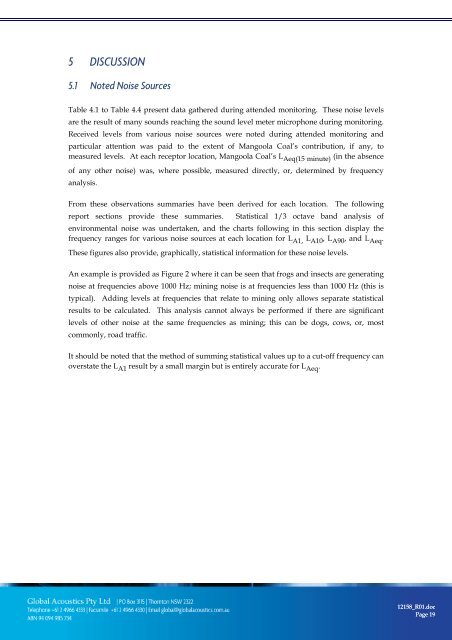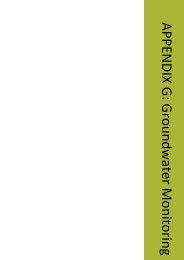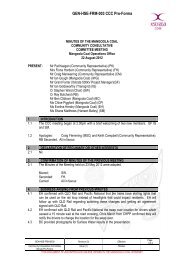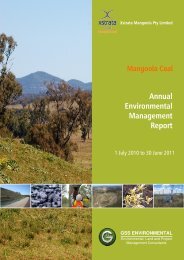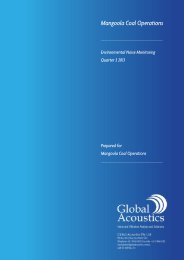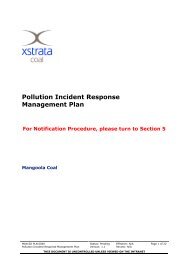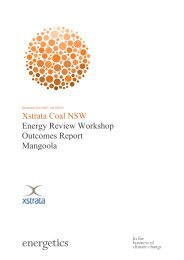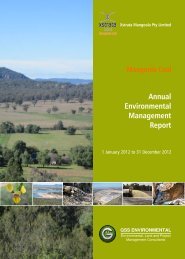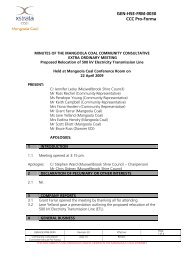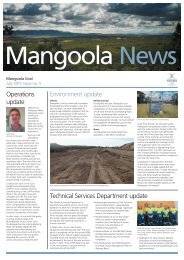APPENDIX I: Noise Monitoring Data - Xstrata Coal Mangoola
APPENDIX I: Noise Monitoring Data - Xstrata Coal Mangoola
APPENDIX I: Noise Monitoring Data - Xstrata Coal Mangoola
Create successful ePaper yourself
Turn your PDF publications into a flip-book with our unique Google optimized e-Paper software.
5 DISCUSSION<br />
5.1 Noted <strong>Noise</strong> Sources<br />
Table 4.1 to Table 4.4 present data gathered during attended monitoring. These noise levels<br />
are the result of many sounds reaching the sound level meter microphone during monitoring.<br />
Received levels from various noise sources were noted during attended monitoring and<br />
particular attention was paid to the extent of <strong>Mangoola</strong> <strong>Coal</strong>’s contribution, if any, to<br />
measured levels. At each receptor location, <strong>Mangoola</strong> <strong>Coal</strong>’s L Aeq(15 minute) (in the absence<br />
of any other noise) was, where possible, measured directly, or, determined by frequency<br />
analysis.<br />
From these observations summaries have been derived for each location. The following<br />
report sections provide these summaries.<br />
Statistical 1/3 octave band analysis of<br />
environmental noise was undertaken, and the charts following in this section display the<br />
frequency ranges for various noise sources at each location for L A1, L A10 , L A90 , and L Aeq .<br />
These figures also provide, graphically, statistical information for these noise levels.<br />
An example is provided as Figure 2 where it can be seen that frogs and insects are generating<br />
noise at frequencies above 1000 Hz; mining noise is at frequencies less than 1000 Hz (this is<br />
typical). Adding levels at frequencies that relate to mining only allows separate statistical<br />
results to be calculated. This analysis cannot always be performed if there are significant<br />
levels of other noise at the same frequencies as mining; this can be dogs, cows, or, most<br />
commonly, road traffic.<br />
It should be noted that the method of summing statistical values up to a cut-off frequency can<br />
overstate the L A1 result by a small margin but is entirely accurate for L Aeq .<br />
19<br />
12158_R01.doc<br />
Page 19


